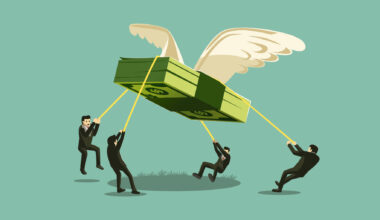It’s not uncommon when reading financial news and economic research, whether in mainstream publications or more specialist papers, to see references to the ‘economic cycle’, otherwise known as the ‘business cycle’. These interchangeable terms refer to a fundamental aspect of modern economies, namely, their cyclicality.
What do we mean by cyclicality?
There are cycles in nature which can help us understand the business cycle and how it works.
A cycle refers to a series of events or phenomena that recur in a regular and predictable sequence over time. This concept is widely observed in various domains such as economics, nature, and social patterns.
Examples of natural cycles include, for example, the water cycle, which involves the continuous movement of water on, above, and below the surface of the Earth, cycling through evaporation, condensation, precipitation, and runoff.
Another example of natural cycles are seasonal cycles. These are changes in weather patterns and daylight, resulting from the Earth’s tilt and orbit around the Sun, leading to seasons like spring, summer, autumn, and winter.
The ‘business cycle’ refers to the fluctuations in economic activity that an economy experiences over a period of time. It’s characterized by four main phases: expansion (where the economy grows and employment increases), peak (the highest point of economic activity, marking the end of expansion), contraction (a period of economic decline marked by falling GDP and rising unemployment), and trough (the lowest point of economic activity, marking the end of contraction before a new cycle of expansion begins).
Similar to natural cycles, the business cycle is periodic, though its duration and intensity can vary and are less predictable. Both natural and business cycles involve phases of growth and decline, and both are influenced by external factors. Natural cycles by environmental forces and the business cycle by economic policies, consumer behaviour, and global events.
Additionally, just as natural ecosystems adjust to the cyclical changes in their environment, economies adapt to the phases of the business cycle through adjustments in monetary and fiscal policies, business strategies, and consumer spending behaviours. This adaptability highlights a resilience inherent in both natural and economic systems, allowing them to endure through various phases of their respective cycles.
Conventional wisdom suggests that today we are in the late stage of the business cycle, driven by extended market rallies, peak employment, and signs of inflationary pressure, typical late-cycle indicators.
However, this perspective may overlook the unique economic reset triggered by the 2020 recession. That downturn was profound, reshaping economic landscapes and resetting the cycle clock in ways that traditional models might not fully capture.
Consider this: the rapid and robust policy responses to the 2020 downturn, including unprecedented fiscal stimulus and accommodative monetary policies, have not only cushioned the economy but also laid the groundwork for a new expansion phase. The recovery has been uneven, yes, but it’s important to recognise the foundational reset that occurred.
The job market, while strong, is still recalibrating from the pandemic’s disruptions, suggesting more room for growth before hitting the constraints typical of late-cycle phases. Additionally, many sectors are still in the early stages of leveraging technological advancements accelerated by pandemic conditions, indicating potential for new growth trajectories.
Moreover, the inflation we’re witnessing could likely be more reflective of the transitory supply chain adjustments caused by the pandemic rather than entrenched, demand-driven inflation typical of late-cycle stages.
Therefore, when considering the 2020 recession as a hard reset, it’s plausible to argue we’re witnessing the early innings of a new business cycle, characterised by growth opportunities that astute advisors can harness for forward-thinking investment strategies.
If this view is correct, that we’re in the early stage of a new business cycle after the 2020 reset, equity investors stand to benefit from
an expanding economy that boosts corporate earnings and broadens market opportunities.
This phase typically sees sectors like technology and consumer discretionary thrive, offering attractive growth prospects. Equities become more appealing if interest rates decline, especially when compared to bonds. Investors might lean towards a more aggressive portfolio strategy in this case, favouring growth-oriented stocks.
Disclaimer: The views expressed in this article are those of the author at the date of publication and not necessarily those of Dominion Capital Strategies Limited or its related companies. The content of this article is not intended as investment advice and will not be updated after publication. Images, video, quotations from literature and any such material which may be subject to copyright is reproduced in whole or in part in this article on the basis of Fair use as applied to news reporting and journalistic comment on events.


